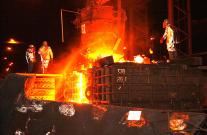Don’t Automate a Dysfunctional Process 1
 Are you thinking of automating a business process? If not, you should be or you’re going to get left behind. But before you do, listen to this true story. It was told to me many years ago and it occurred many years before that.
Are you thinking of automating a business process? If not, you should be or you’re going to get left behind. But before you do, listen to this true story. It was told to me many years ago and it occurred many years before that.
“Oh, forget it Howe!” I hear you saying. “Business isn’t the same as it used to be. Everything’s changed.”
To that I say read on. You’ll be amazed. The applications of this tale were valid then; they’re valid now; and they will be valid a hundred years from now.
More than that, the applications go beyond the basic industrial setting of this incident. Anyone trying to automate a modern manufacturing process today had better pay attention. But it doesn’t stop there. The implications for automation of paperwork, or any kind of information flow, are just as strong.
The General Manager and the Robot
as told to Norm Howe:
A foundry is a no-nonsense place to work. It can be hazardous if you’re not careful, and you have to be emotionally strong to survive in that kind of environment. In the past it was even tougher.
I was one of the first engineers to work in the foundry and I remember the day when we got a new General Manager. The method for selecting supervisors in a foundry at that time was to pick the meanest, toughest man on the production line and make him a foreman. The meanest, toughest foreman then became the superintendent and so on up the line.
The General Manager of the Casting Division had half a dozen foundries under him, a workforce of 30,000. He thought he was God walking on earth.
One day the new GM came to our plant to inspect his new domain. As he toured the plant he got more and more upset, and this man was moody the day he was born. Before he left he stopped at the process engineering department and demanded to know why there were no robots operating in the plant.
The tension in the room was enough to curl our pocket protectors. No-one had a clue. The GM slammed his fist on the nearest desk and declared that there had better be a robot in the plant the next time he came into town, or else. Then he stalked out the door.
We looked at each other in horror. The GM liked to eat engineers and pick his teeth with their bones. What were we going to do? We came up with a couple of lame ideas but they were either outrageously expensive or totally impractical.
Then somebody mentioned a painting robot that was sitting idle over behind the engine plant. “Why don’t we set that up to spray resin on the sand molds?” he said. The more we thought about it, the better the idea sounded.
The production line for making engine blocks works something like this:
- Create two halves of a sand mold around a wood ‘pattern’ that represents the shape of the prospective engine block.
- Spray a resin onto each half of the sand mold which, when cured, holds the mold in the proper shape.
- Remove the wood patterns from the two halves of the mold, the two halves are assembled and molten iron is poured into the cavity to make the casting.
We had a high scrap rate at the time and we had traced it to the resin spraying process. It was a very sensitive operation but we didn’t know why. All we knew was that it took a very skilled person to spray on the resin.
With the best sprayer the scrap rate was marginally acceptable and with anyone else it was through the roof. “Great,” we thought. “We’ll program the robot to emulate our best sprayer and then we’ll just run the robot 24/7.”
We were happy…well, at least we weren’t suicidal any more. We had a quick and easy way to reduce the scrap rate. Unfortunately, it didn’t quite work out that way.
Check back next time to find out what the foundry engineers should have asked the sprayers.

Add new comment